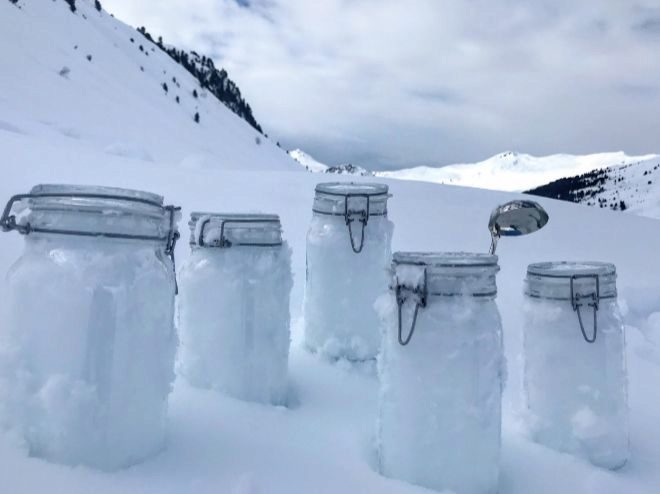- Pollution Fish 'addicted' to plastic
- European study: Garbage reaches the bottom of the ocean
Where scientists look, there they find remains of plastics. Even in the depths of the ocean or as just checked now, in remote areas covered by ice. A new study published on Wednesday confirms the presence of these highly polluting particles in regions far from the action of man. The microplastics resulting from the rupture or degradation of larger fragments are transported through the atmosphere and can travel more than 3,500 kilometers until they are deposited - through snow-shaped precipitation - in the Alps and in the Arctic.
This is assured by a team of scientists from Germany and Switzerland after collecting snow samples from different parts of the world and analyzing them with a powerful instrument that has allowed to detect fragments with sizes of only 11 microns, much smaller than those studied so far (generally of between 200 and 300 microns).
Details of the study, led by Melanie Bergmann and Gunnar Gerdts, of the Center for Marine and Polar Research (AWI) of the Alfred Wegener Institute in Germany, are published in the journal Science Advances .
Between 2015 and 2017, researchers took snow samples from three locations in Germany (Helgoland, Bavaria and Bremen), the Swiss Alps and the Arctic (in the Fram Strait, between the Greenland coast and the Norwegian Svalbard archipelago) . In all there was a high concentration of microplastics. In the samples collected on a rural road in Bavaria the concentration was 154,000 particles per liter, while those in the Arctic contained up to 14,400 particles per liter.
These figures are higher than those found in previous studies that, for example, have measured the presence of microplastics in dust deposits. Gunnar Gerdts believes that this is due to two fundamental factors. On the one hand, because the snow retains very well the plastic particles present in the atmosphere and on the other, the technology used to analyze the samples, since infrared spectroscopy is able to detect the smallest particles.
The type of plastic found in the snow varies by location . In the Arctic, they found nitrile rubber (NBR), acrylates and plastic paint, all used in a large number of industrial applications . For example, nitrile rubber, resistant to the corrosion of fuels and capable of withstanding extreme temperatures, is widely used in the manufacture of components such as seals or hoses. Plastic paints are used to cover buildings, ships, cars or oil platforms. Bavarian road samples contained various types of rubber, used to make tires, among many other uses.
This team believes that most of the microplastics in Europe and especially in the Arctic, come from the atmosphere and snow. However, Gerdts explains that they are currently unable to determine when they have been deposited.
Health effects of inhaling them
Because these tiny fragments of plastic circulate through the air , scientists warn that the effect that inhaling these small particles can have on health is unknown. And, as they warn, studies conducted so far have focused on studying how it can affect health to ingest after having been detected in tap water or animals. " The investigation of microplastics is a young discipline and that of microplastics in the atmosphere, even younger. More and more are being sought in soil and air. As a result of the finding of high concentrations in the atmosphere and their possible link with the human health when they are inhaled, I am convinced that we will see more studies in the future, "Gerdts explains to this newspaper through an email.
In that line, he adds, his team has just started a cooperation project with the air monitoring network of the German environmental monitoring institute, but they need more funding.
Although there is increasing awareness among citizens and governments about the effects of plastic on the environment and on the health of living beings, Gerdts believes that to eradicate this problem we must go to the origin: " It is obvious that there are failures in all recycling systems , whether due to improper use or because it does not work well. Therefore, reducing single-use plastics should be a reasonable objective in the short term, "he says. In his opinion, "the problem is not plastic but rather our consumerist society , accustomed to using and throwing away".
According to the criteria of The Trust Project
Know more- Science and Health
- science
ScienceIndia successfully sends its second mission to the Moon, the Chandrayaan-2
Environment The current climate crisis is the first global of the last two millennia
Science Why we can't talk about heatwave in Spain despite extreme temperatures

